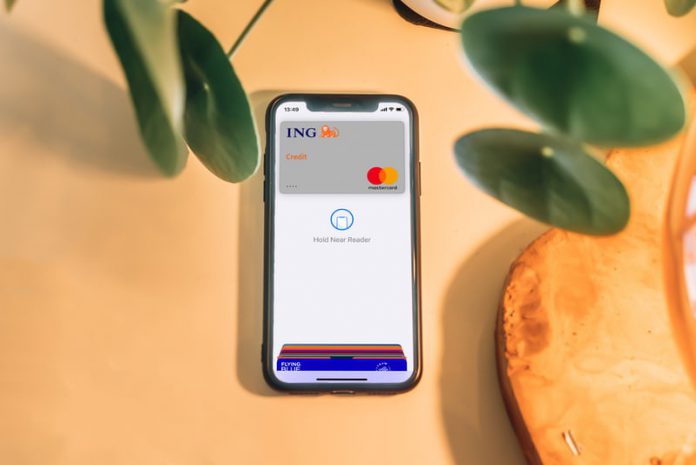A OneSpan blogpost has underlined how financial institutions (FIs) can compete in the mobile banking sector following the shifts brought about by the Covid-19 pandemic.
According to OneSpan, the pandemic and the enacted distancing protocols dramatically accelerated the shift towards expanding digitisation, the increased offering of remote banking services and prioritised digital platform customer experience.
The company said, “Suddenly with less access to bank branches and ATMs, the mobile and online banking channels were the primary or in some cases the only banking options available. Now over a year since the initial outbreaks, the priorities of financial institutions and the consumers they serve have been rearranged.”
For FIs to compete in this new world, OneSpan underlined that they must adopt a ‘mobile-first strategy’ and offer an exceptional digital experience.
FIs must also invest in the right technology solutions to succeed in the mobile banking market, as this will allow them to build wholly digital processes that provide their banking customers with the entire portfolio of financial services to allow them to conduct their transactions and activities using a bank app exclusively if they choose, the blogpost highlighted.
By doing this, OneSpan believes many FIs will be able to ensure the security of each transaction without injecting ‘unnecessary friction’ into the process.
A recent survey by The Financial Brand found that 75% of FIs listed digital banking transformation as a top banking priority through 2021, while 29% of mobile users claimed that they would switch to another app or website if they fail to find what they are looking for within three seconds.
OneSpan said this latter finding ‘puts an enormous amount of pressure on the FI to create the best possible digital experience for opening checking accounts, mobile payments and other retail banking services’.
Meanwhile, any future successful mobile banking strategy cannot be achieved without security. The blogpost detailed that, with fraudsters noting the movement towards digital channels, they are all too happy to exploit new and first-time mobile bankers. Therefore, any mobile channel expansion should be done with a commitment to building app, device and account security into the process.
Challenges to mobile-first strategies
When analysing the challenges that may lay ahead for FIs looking to develop a strong mobile banking strategy, OneSpan referenced three challenges. These were overcoming legacy infrastructure challenges, the challenge of creating an exceptional customer experience and the need to ensure mobile banking is secure from fraud.
On the first challenge, the company cites cloud technology and software-as-a-service solutions as offering FIs a way to circumvent the large up-front costs required to provision and deploy IT infrastructure.
OneSpan said, “Rather than building a new wing to the data center, FIs can keep their existing hardware and supplement with cloud resources to accommodate their needs. Some organizations may find that leveraging a public cloud will be the ideal road to supporting and expanding their mobile applications, while others can use it as a stop gap measure to offer remote services today as they create a roadmap for a long-term solution.”
For the second and third challenges, the firm highlighted mobile security technology such as mobile app shielding as a cloud solution for FIs to consider, as app shielding can ensure that applications can operate safely.
Biometric authentication is also recommended to be deployed to the mobile banking app, including facial recognition or fingerprints. These are recommended as they are ‘significantly more secure’ than both SMS and one-time passwords, and biometric authentication challenges are easier and faster to complete, subsequently removing and reducing friction in the process.
The company remarked, “With security in place, FIs can then start to improve the customer experience by enabling customers to do more on the mobile app – from opening new accounts to applying for loans and mortgages. With electronic signatures and digital identity verification technology, FIs can digitize even the most complex, regulated processes, such as loans and account openings, with confidence knowing the solution can verify the identity of the signers at the outset.”
OneSpan highlighted in the blogpost that there are ‘direct consequences and opportunity costs’ for FIs not pursuing a mobile-first strategy that can be severe. This includes facing higher customer abandonment and the loss of potential new customers to challenger and neo-banks.
On this matter, the firm cited the Financial Brand survey which detailed that one in three consumers – 32% – claimed they would walk away from a brand they love after just one bad experience.
Contemplating all these different factors, OneSpan said the focus for FIs should be interoperability, as more and more technologies are required to interact and integrate for a single process to be successful.
The company gave the example of standard application security needing to function alongside biometric authentication, identity verification and electronic signatures in the account opening process.
OneSpan said, “A single holistic vendor offers the peace of mind of a technology platform. Each of their solutions are designed to work together and complement each other. Furthermore, a single vendor also provides a single point of contact for troubleshooting and other complications that may arise. There is no blame to shift onto another vendor. There’s one rep and one number to call.”
The blogpost can be found here.
Copyright © 2021 RegTech Analyst
Copyright © 2018 RegTech Analyst






